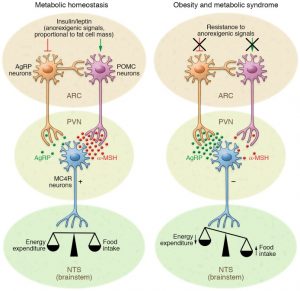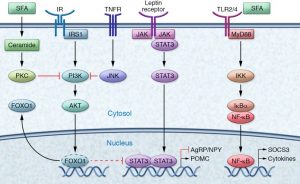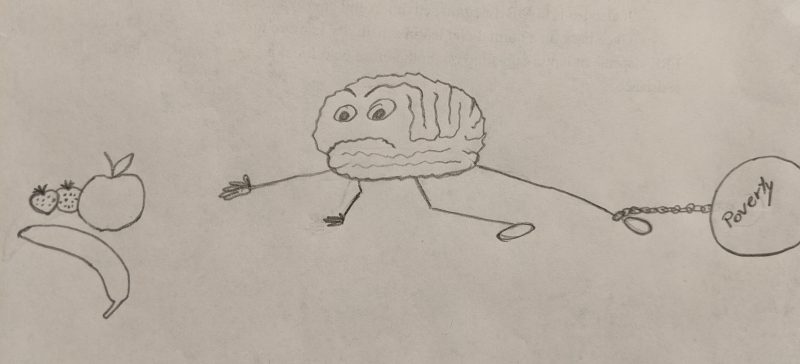Most people know that the initiative of former First Lady Michelle Obama was Let’s Move. One of her goals was to help a new generation of kids grow up knowing the benefits of exercise and a healthy diet and how to apply it to their lives. Instilling such habits when young and being consistent into adulthood can be very beneficial and a vital part of people’s fitness (being fit is not the same as being “skinny” though). However, many people don’t start exercising and eating healthy foods until later in life, specifically as a means to lose weight. This can be an oversimplified understanding of the way obesity works because while these adjustments can definitely help with weight loss, they do not necessarily work for everyone. (Nor should people be expected to lose weight simply because they do not fall into the “Normal” BMI range, but issues with this categorization are a separate topic.) Regardless, a possible explanation for difficulties with losing weight can be found in the brain.
The Science
Within the brain region of the hypothalamus exists a neuronal circuit called the melanocortin system with two subsets of neurons: AgRP and POMC. At homeostatic functioning, insulin and leptin inhibit AgRP neurons within this system to decrease energy intake and instead activate POMC neurons to increase energy expenditure. However, an HFD (high fat diet) can significantly reduce hypothalamic sensitivity to insulin (even after only three days) and may contribute to the development of insulin and leptin resistance. This resistance may be restored by unsaturated fatty acids like omega-3.
However, saturated fatty acids can trigger inflammatory signaling which, when prolonged, can lead to cell death in the hypothalamus, specifically in POMC neurons. HFDs and overnutrition can also cause oxidative stress in neuronal cells and consequently metabolic syndrome. An interesting fact is that hypothalamic inflammation, and thus possibly metabolic dysregulation, occurs before significant weight gain, meaning that once weight gain does occur, it might already be very difficult to lose it again and restore the original homeostasis in the brain.


Other Issues
This science explains why it may be more difficult for some people to lose weight. But if overnutrition or high fat diets can induce metabolic dysregulation and issues surrounding obesity, why do we consume “unhealthy” foods anyway?
Well, there are a number of possible reasons… Sometimes we indulge in unhealthy food simply because it tastes good and we crave it. Sometimes we are in a rush and only have twenty minutes to eat, so we buy fast food. But oftentimes, there is more to it than that, especially in different segments of the population.
Food availability and financial insecurity are two factors that can influence what types of food a person ends up consuming. Many people in the United States live in poverty or financial insecurity, and when unhealthy processed food is cheaper than healthy fresh food, people are more likely to purchase the box of mac-‘n-cheese or canned beef stew instead of fruits and vegetables or chicken breast. A further issue we encounter in connection to this, is that impoverished areas are often considered to be “food deserts”, meaning that there is less access to fresh foods because it is less available compared to urban or suburban settings. Therefore, even if people wanted to make healthy choices in terms of their diets, it may simply not be possible or feasible for them. This is where policies, incentives, or government-run programs may be beneficial. Let’s Move was a first step (the program also attempted to improve accessibility and affordability of healthy foods), but there is more to be done.
